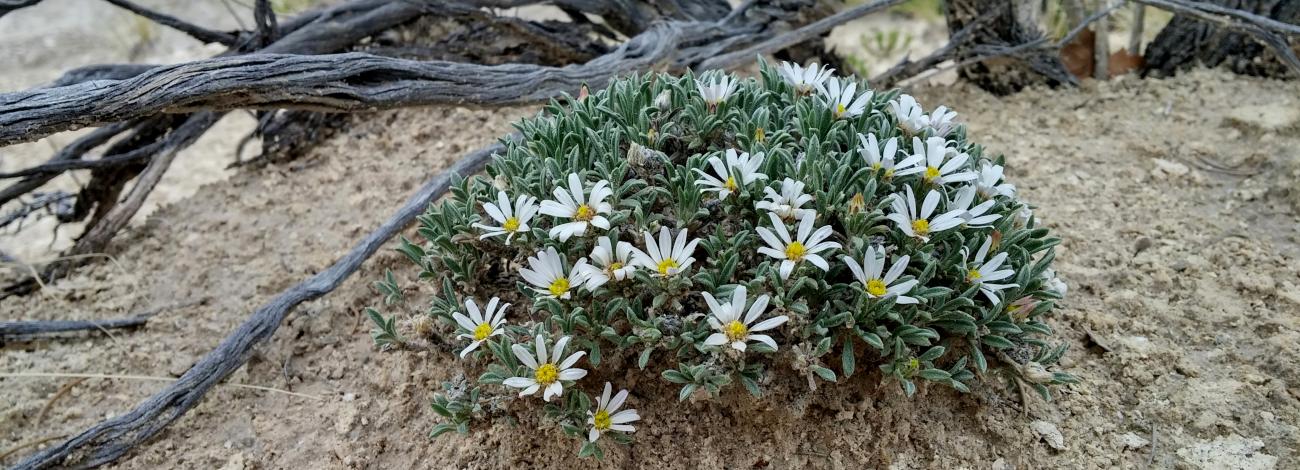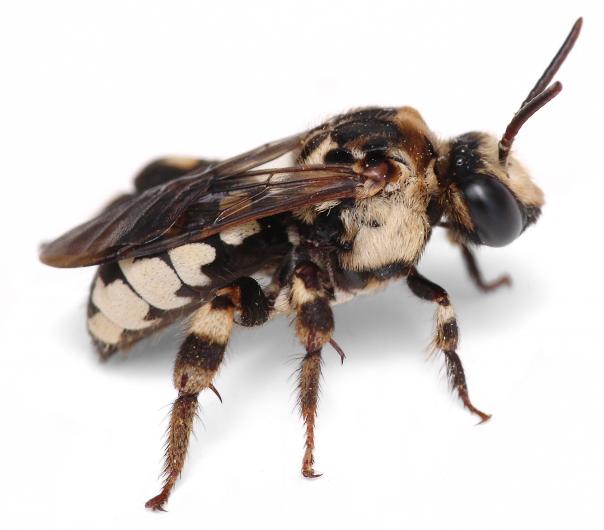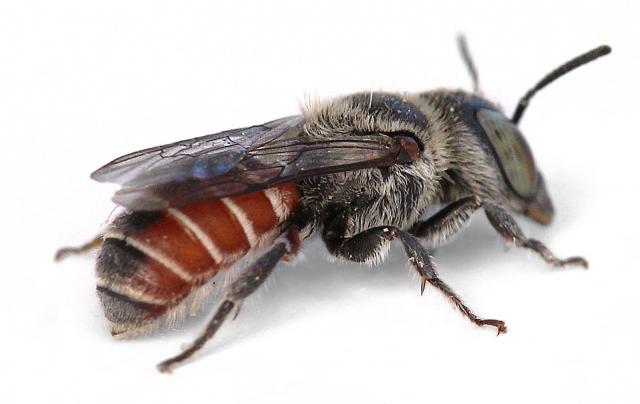
New Mexico Pollinators
The floristic diversity of New Mexico supports a parallel diversity of native pollinators. Native plant communities and their pollinators are closely interdependent, and both are tied to fluctuating environmental conditions driven by drought, fire regimes, and management practices. With nearly a quarter of all North American native bee species present in the state, BLM New Mexico has several ongoing projects dedicated to understanding and benefiting pollinators, with particular focus on native bees.
BLM New Mexico is working with regional experts to 1) monitor pollinator populations across the state using standardized inventory methods and 2) assess pollinator communities associated with some of New Mexico’s most imperiled Special Status plant species.
Standardized Bee Inventories and Multi-Year Monitoring
Standardized pollinator inventory and monitoring efforts are underway in several regions of New Mexico. In each sampling area, the goal is to compile a list of bees residing in the area, documenting which flowers they visit, and the habitats with which they are most commonly associated. A series of one hectare-plots have been established in ecoregions across the state. Sampling these plots over multiple years allows us to quantify the population dynamics of the bee community—which species’ populations are stable over time, and which are changing? This allows us to compare widespread habitats across the entire state—how does the bee community of Pinyon-Juniper in El Malpais NCA differ from the bee community associated with Pinyon-Juniper in Rio Grande del Norte National Monument (RGNM)? This information can then be used to tie management practices to pollinator health and assess how to best conserve pollinator and native plant communities.
Though work is ongoing, and in some areas in its early stages, interesting bees have already been discovered. For example, before the start of this project in 2016, fewer than 40 bee species were known from Taos County. Tentatively, we have now identified 32 genera of bees in RGNM, and at least 140 species. One very exciting find was the rare Ericrocis lata, a cleptoparasitic bee, and its host Centris (likely C. caesalpinae). Two nesting sites for Diadasia australis have also been identified, and at least one appears to have been used for multiple years. And in 2020 during a collecting trip to El Malpais NCA, a Trachusa (likely T. zebrata) was collected. This species is rare in New Mexico, with fewer than a dozen specimens recorded in the last 100 years. Our understanding of which bees live in New Mexico, and where, has increased dramatically in fewer than five years, and continuing to add standardized plots will help us fill in many gaps in our knowledge about native bees.
Pollinators and Rare Plants
New Mexico lists 235 plant species as rare and imperiled, with 103 species that are considered globally imperiled, and 109 species that occur only in New Mexico and nowhere else in the world. New Mexico’s rare and imperiled species include 13 federally listed species, 45 plant species listed as endangered in the State of New Mexico, 51 species listed as sensitive by the Bureau of Land Management, and 75 species listed as sensitive by the Forest Service.
While there have been consistent efforts to document distribution and demography of rare plants in the state, very little is known about the pollination biology and specific pollinators associated with some of the most imperiled of these species. Considering that some of the major direct threats to these plants (including habitat modification, destruction, and fragmentation) are the same threats to the plants’ pollinators, understanding how plant-pollinator interactions are affected by landscape level changes is essential.
To address this critical knowledge gap, BLM New Mexico is partnering with a regional pollinator expert, Dr. Olivia Messinger Carril, to conduct a detailed assessment of pollination biology for at least ten rare plant species located throughout the state. Field work involves documenting which and how many pollinating species visit the plants over their bloom period, quantifying seed set for individuals, relating seed set to insect visitation, and assessing the full suite of pollinating insects in the habitats surrounding rare plant populations and documenting how the pollinator community changes over time in relation to habitat modification. This data will be applied to determine how management practices may be impacting rare plants and the pollinators they depend on.
Early investigations into the pollinators of several of these plants have begun. Numerous small bee visitors in the genus Ashmeadiella were found on the endemic plant, Gypsum Townsend’s aster (Townsendia gypsophila), during a one-day trip this spring. Whether these bees are specialists on plants in the Asteraceae plant family (which includes Townsendia gypsophila) is unknown without more information, but these preliminary findings hint at a mutually beneficial relationship. With continued observations of pollinators on these rare plants, we will likely discover important linkages between bees and those plants, as well as between those plants and the larger plant-pollinator community.


